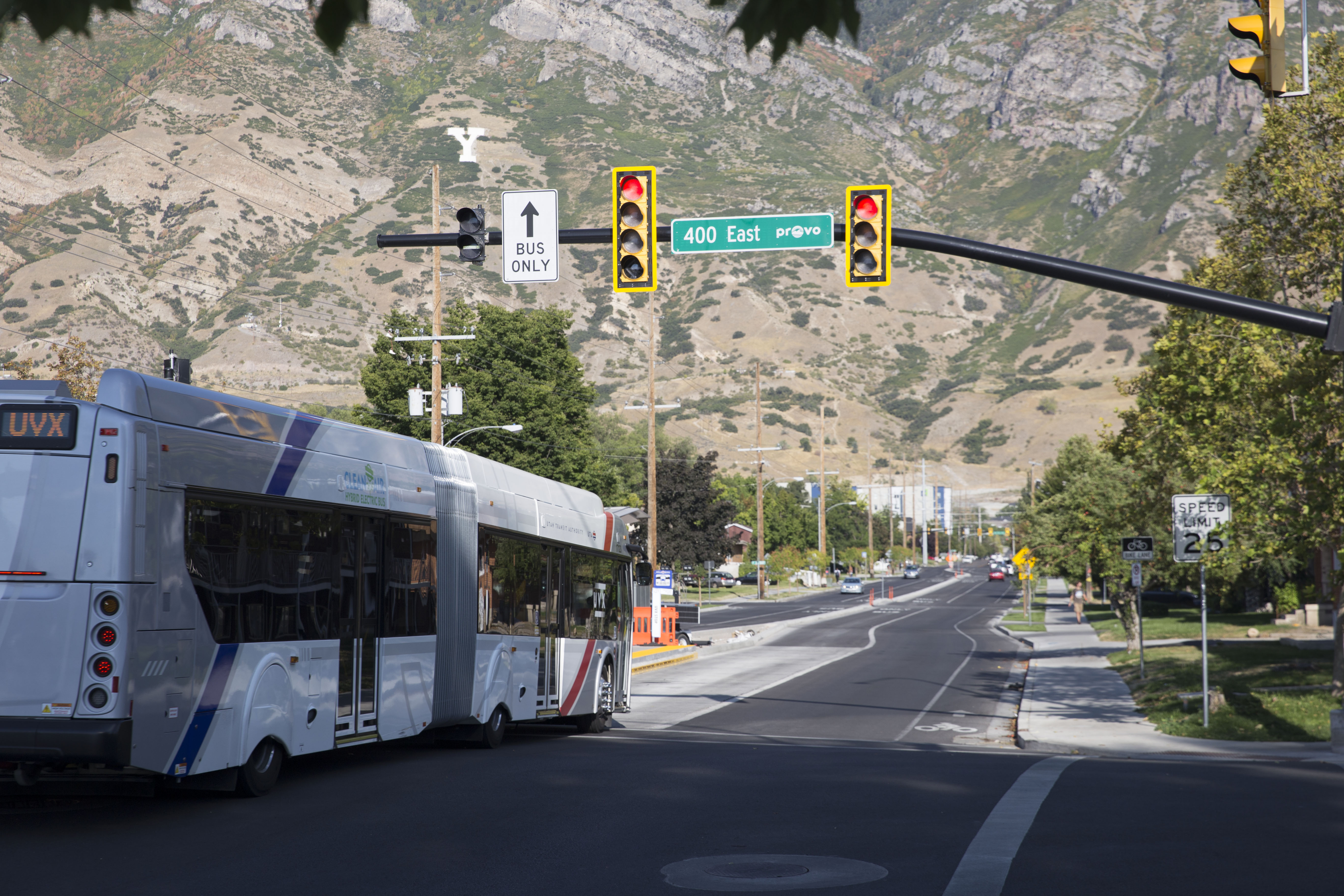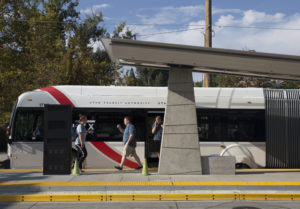
A new high-capacity bus rapid transit system called the Utah Valley Express is a key part of student life in Provo and Orem this fall.
According to Utah Transit Authority, UVX is meant to connect FrontRunner train stations with key locations in Utah Valley. Designed to increase urban mobility and provide more travel options, UVX uses buses with dedicated lanes and traffic signal priority to transport commuters.
UVX began operating on Aug. 13, and students from BYU and UVU have already come to rely on the system to get around. UVX will be free to use for the next three years, according to Utah Transit Authority. The line connects the Provo and Orem FrontRunner train stations, wrapping to BYU and UVU along the way.
Citing the bus system’s reliability and frequent stops, students ride UVX for everything from daily commutes to Walmart trips. UVX is particularly helpful for students who have limited access to other transportation.

“It’s my go-to method for going off campus,” said BYU freshman Ashton Tanner, who is studying biology. Though Tanner said she accidentally left the bus at an incorrect stop on the first day of classes this semester, she now finds UVX straightforward to use and has made UVX part of her daily routine.
One of Tanner’s roommates, Emma Stevenson, also a freshman compared UVX with Provo’s older bus lines and called UVX “the easiest to figure out.” She also praised the frequency with which buses arrive at stops.
Stevenson said she became aware UTA services were free to BYU students through an Instagram post. She said she now uses UVX occasionally to go shopping.
Ewerton Barroso, a 24-year-old student at Provo language center Internexus, said he uses UVX for his daily commute, carrying his bicycle on the bus with him. He said UVX works more effectively than the bus rapid transit systems in his hometown of Manaus, Brazil, though UVX could do more to move quickly through traffic.

Though neither Tanner nor Stevenson said they have access to other forms of transportation, the UVX system is also useful to students with vehicles.
Daniel McPherson, a junior studying physics at BYU, has access to a car, but said he uses UVX daily in tandem with the older bus system. Still, McPherson said he uses UVX to save gas and share a car with his wife.
Marlena Roach, a BYU junior studying athletic training, took to using UVX since her truck began to “have issues.” She said she finds UVX convenient, but is concerned that the placement of some UVX stops on islands in the middle of roads could cause jaywalking.
Grace Green, a freshman at UVU, owns a car but said she uses UVX for her daily commute so she does not have to deal with campus parking. She said the timing of the buses is sometimes inconvenient, but is generally not a problem.

According to the Utah Transit Authority, UVX will have up to 18 buses on the road at a time serving 18 stations, every six minutes during heavy commute hours of the day, 10 minutes throughout the rest of the day and 15–60 minutes in the early and late hours of the day.
For a map of the UVX route, visit the Utah Transit Authority website.




